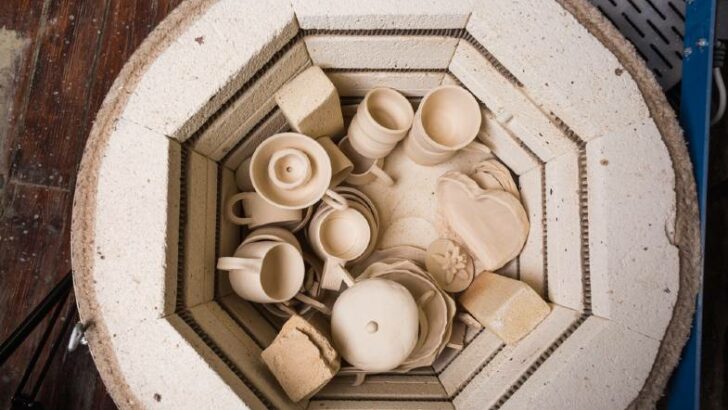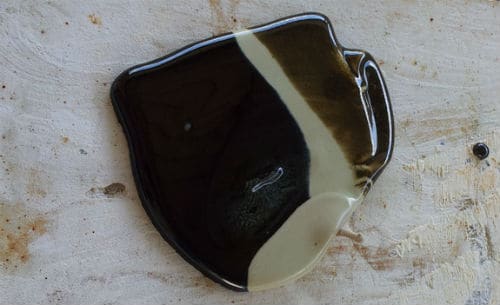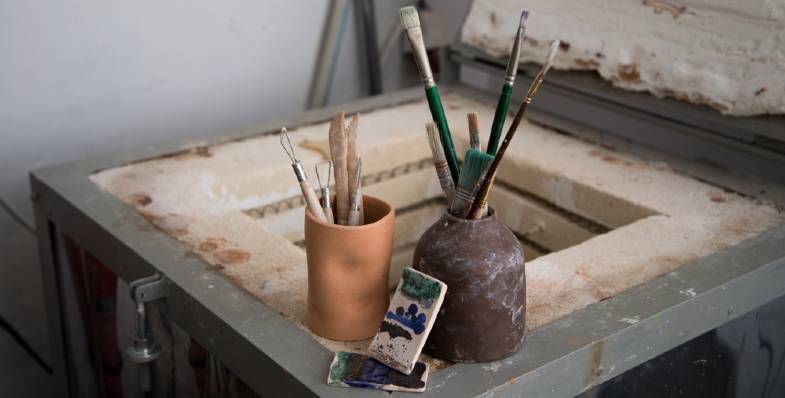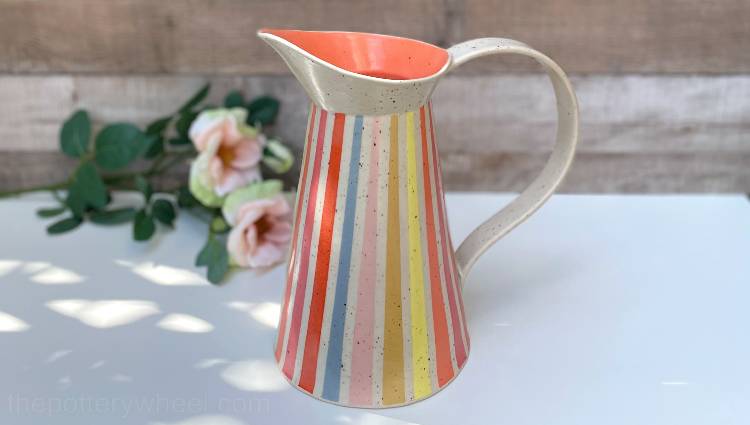Your cart is currently empty!
Can You Use a Kiln on a Wooden Floor – Is it a Good Idea?
Published:
Last Updated:

Affiliate Disclaimer
As an affiliate, we may earn a commission from qualifying purchases. We get commissions for purchases made through links on this website from Amazon and other third parties.
Lots of properties, sheds, studios, and homes, have wooden floorboards. If you’re installing your new kiln, you may be wondering, if you can use a kiln on a wooden floor. I was in a similar position. I wanted to know if it was safe to put my kiln in a wooden shed. And this is what I found out…
You should not put a kiln directly on a wooden floor. However, a wooden floor can be acceptable if you use the stand the kiln was supplied with. And, have at least 2” of non-combustible boards underneath the kiln. This should extend at least 12” from the base of the kiln.
Disclaimer: This article is for informational purposes. I’m a potter, not a kiln technician, or a fire safety expert. Your safety is key. It’s recommended that you install your kiln in accordance with the supplier’s specifications. For expert advice, please consult a relevant professional body.
What is the Problem with Using a Kiln on a Wooden Floor?
To state the obvious, wood is flammable. However, the problem is not that the floor will catch alight immediately. Rather, the issue is that over time the heat that comes off the kiln will gradually dry out the wood.
The drier the wood becomes, the more flammable it becomes. As wood dries out, its flash point becomes lower. The flashpoint is the lowest temperature at which an organic substance will burn. So, as the wood dries out, the temperature at which it could potentially set alight becomes lower too.
As such, the heat from the kiln is turning the surrounding wood into kindling. This makes the wood much more flammable generally and makes your setup more vulnerable.
Kilns can go wrong and can overheat. If a kiln overheats, liquid glaze can melt through the base of the kiln onto the floor below (source). If this red-hot glaze makes contact with a very dry wooden floor, the chances of a fire are high.
In addition to the issue of flammability, very dry wood fiber is also weaker and less supportive. The heat from a kiln can weaken your floor and joists which makes them less structurally sound.

So, Does That Mean I Can’t Use a Kiln on a Wooden Floor?
Some potters are adamant that using a kiln on a wooden floor is fundamentally a bad idea. They will recommend that you put the kiln somewhere else that has a concrete floor. Or they recommend getting rid of the wooden floor and replacing it with something non-combustible.
However, this might not be an option for you. If that’s the case, then what then? What measures can you take to make your setup safe?
These are the recommendations made by a number of kiln suppliers:
Clearances
Wherever you locate your kiln there must be sufficient clearance between the kiln and any surrounding walls. Some suppliers recommend a clearance of at least 12 inches. Others specify that the distance between walls and kilns is 18 inches.
Having a reasonable clearance also applies to the distance between the base of your kiln and the floor too. It is important that your kiln is positioned on the kiln stand that it was supplied with.
Most installation instructions specify that the kiln shouldn’t go directly onto the floor, and must be supported by the stand. The stand will have been designed to minimize heat transfer. But also allows for air to circulate under the kiln.
However, many kiln stands are only designed to raise the kiln around 8” from the floor. So, what can you do to protect your wooden floor from the heat of the kiln?
Non-Combustible Materials for Your Floor
One solution to the issue of a wooden floor is to cover it with non-combustible material. Some examples would be brick, cement, cement board, slate, or stone.
The Uniform Mechanical Code is a national code developed by the IAPMO. The code, amongst other things, provides guidelines on safely installing heat-producing equipment.
The specifications laid out in the code are that the floor under a kiln needs non-combustible material. This should comprise of at least 2 inches of masonry or concrete.
In addition, the heat barrier needs to extend out at least 12 inches from the base of the kiln. This means that it needs to be 12 inches wider than the kiln, or the feet of the kiln stand.
Another suggestion by L&L kilns is to put your kiln on cinder blocks. Personally, I liked this idea and it is something that I chose to implement myself. I liked the fact that the cinder blocks created a good distance between the kiln and the floor.
Also, cinder blocks provide plenty of air circulation under the kiln. I find that when the kiln is firing the air under the cinder blocks gets warm. However, with a fan on, the air is no warmer than the heat generated by a radiator.
Note however that the higher up the kiln is off the floor, the closer it is to the ceiling. It is also important to make sure that you have sufficient clearance above the kiln.
Having your kiln on cinderblocks may not be an option. In this case, you put an additional layer of cement board strips under your cement boards. This will create more airflow by simply having 2 inches of non-combustible material.
Whatever you choose to do, make sure that the surface that the kiln is sitting on is stable.
Kiln Ventilation
Another useful, if expensive, addition to a kiln setup is to have a ventilation system. Not all potters use a made-for-purpose ventilation unit. Some simply open the door and window and use a fan to create a cross draft.
However, ventilation systems such as a Skutt Envirovent or a Vent a kiln have been found to be more effective (source).
The purpose of a ventilation system is threefold. Firstly, it will remove noxious fumes and gases during firing. Secondly, they create a more even temperature in the kiln, so you avoid hot and cold spots when firing.
Finally, ventilation reduces the temperature in your kiln room, so you avoid heat build-up. This final benefit is especially useful if you have a wooden floor. Even if the floor is covered up by the recommended non-combustible material.

Check that Your Kiln Room Meets Local Codes
It may be a good idea to plan a kiln installation in conjunction with the relevant authorities. Seeking advice from building control, your insurer, and the local fire department will help you avoid problems later on.
Each of these organizations will have its own safety requirements. You would be advised to find out what they are in advance and plan your installation to meet these specifications.
Also, whilst the kiln supplier’s installation instructions are important, many suppliers will state that the local code supersedes their guidelines.
In addition to that, in some cities, an inspector is required to inspect newly installed kilns. It’s important that your kiln meets its fire code inspection. So, you’d do well to find out in advance what they require with regard to safeguarding your wooden floor.
Use a Webcam
Another additional safety precaution is to set up a webcam in your kiln room. These are relatively inexpensive to install and can give you peace of mind that all is well when you fire.
This is helpful if your kiln is outside in a separate building, perhaps a shed or outhouse.
Another method that some potters use if their kiln is unattended, is to use a fire alarm and baby monitor. If the fire alarm goes off, you will hear the noise over the monitor.
It is, of course, best to avoid a fire in the first place. However, these above monitoring methods are helpful to boost your peace of mind.
Final Thoughts
Using a kiln on a wooden floor is not ideal. However, many floors have some sort of wooden construction. So, for that reason, it’s helpful to know what measures you can take to protect them. Any measures that you take should be done in consultation with your supplier and local fire department.



